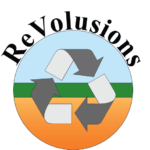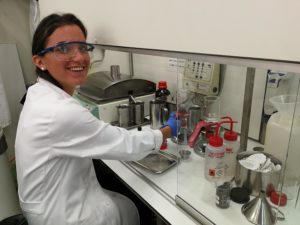Revolusions
The ReVolusions project ‘Quantifying Recycling Fluxes of Earth Surface Materials and Volatiles in  Subduction Zones using Melt Inclusions’ is a five year 1.7M EUR project funded by the European Research Council that started in January 2018 and is led by Dr. Janne Koornneef. This project funds 2 PhD students and a senior research fellow, as well as the purchase of a MAT-253 Plus IRMS that will be installed in the VU Amsterdam labs in 2018.
Subduction Zones using Melt Inclusions’ is a five year 1.7M EUR project funded by the European Research Council that started in January 2018 and is led by Dr. Janne Koornneef. This project funds 2 PhD students and a senior research fellow, as well as the purchase of a MAT-253 Plus IRMS that will be installed in the VU Amsterdam labs in 2018.
The overarching goal of the project is to better quantify global subduction related fluxes of materials that enter the Earth mantle at destructive plate-tectonic boundaries. Plate tectonics are fundamental to the geochemical cycles that link Earth’s mantle and exosphere and in turn control the atmosphere’s composition and our climate. Currently a major unknown is what proportions of volatiles, sediments and oceanic crust are transported into the deep mantle, or are returned, i.e. ‘recycled’ to the crust and atmosphere. Global recycling flux estimates, including carbon, are contradictory highlighting the need for a new, more precise approach to their quantification.
ReVolusions thus aims to better quantify global recycling fluxes by a geochemical study of two types of subduction zones: continental and oceanic zones of which the former has higher volatile fluxes and plays a key role in past and present-day climate change. The proposed work utilises isotope analyses of deeply formed melt inclusions, tiny pockets of melt trapped in minerals, to directly determine what comes back up in subduction zones. Undertaking a multiple isotope study of these inclusions is now possible, owing to Koornneef’s recent success in significantly improving mass spectrometer detector amplifier technology that led to an order of magnitude improvement in precision for isotope analyses of small samples. The team will integrate two ground-breaking techniques to identify recycled components and determine volcanic and deep mantle fluxes: 1) coupled Sr-Nd-Pb isotope ratio analysis of individual melt inclusions using the high-gain amplifier method I pioneered; 2) carbon and oxygen isotope analysis of CO2 from melt inclusions using a newly developed crushing technique. The projects final goal is to provide understanding of how subduction geodynamics control the distribution of elements between Earth’s major reservoirs (atmosphere, crust and mantle) that how this has affected short and long-term climate changes throughout Earth’s history.
ReVolusions team:
Dr. Janne Koornneef (VU website)
Dr. Igor Nikogosian (VU website)
Twan Bracco-Gartner (VU website)
Natascia Luciani (VU website)



